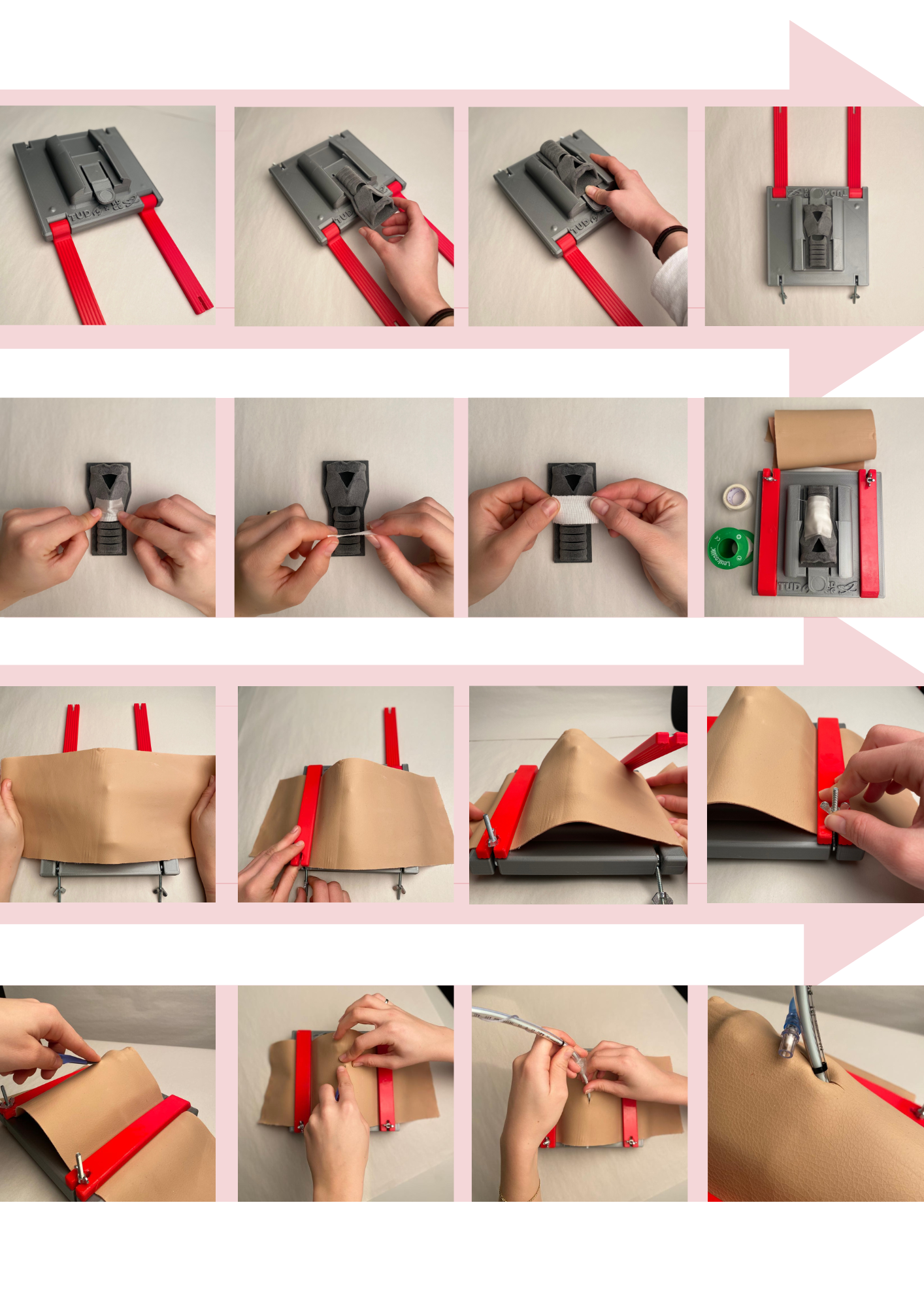TU Delft students create 3D-printed larynx to improve doctor training
In cases of upper airway obstruction, acute surgery to open the trachea just below the larynx is the only solution. Due to the rarity of this syndrome, doctors have very little experience with this life-saving procedure. Doctors at the Reinier de Graaf Hospital and students at TU Delft decided that this had to change. Together they developed a realistic and durable model of the larynx.
Until now, doctors have lacked a good model for practising acute laryngeal surgery, or cricothyrotomy. It is crucial that doctors practice this procedure, because if it is not performed correctly, it can cause permanent injury or even death. To practise, doctors often use pig larynges made from offal or 3D models, which do not accurately represent the human larynx. So there is a great need for a more realistic, reusable and clean training model.

Material selection
A group of students (Sophie, Erik, Guusje, Jiska, Stijn and Paco) from the Biomedical Engineering minor enthusiastically took up the challenge. It was important for the training model not only to look realistic, but to feel real as well. For example, the cartilage had to be strong but also pliable, and the skin had to be flexible but tear-resistant. What is the best material for this? After much research, the students, who worked with Jan van Frankenhuyzen, a research engineer in the Fantoom Lab, first decided to 3D-print prototypes in different materials. They then went back to the doctors with these prototypes.
After several rounds of feedback, the students settled on a 3D-printed larynx made of synthetic rubber, specifically thermoplastic polyurethane. The tissue between the cartilage and the skin was eventually replicated with layers of tape. And the skin layer was made of silicone with an elastic reinforcement. The students also developed a platform into which the larynx fits and over which the skin is stretched. This allows the model to be easily reused.
Major impact
‘It was incredibly fun to supervise this project. The students were incredibly driven and after each round of feedback from the doctors, they were keen to improve the model,’ says Van Frankenhuyzen. The doctors, Dick Kooper and Nanno Peek, are also enthusiastic. The Reinier de Graaf Hospital has already taken eight artificial larynges and used them, among other things, at a national workshop for ear, nose and throat doctors. ‘To make the larynges available in the long term, we have now started looking for a manufacturer,’ Frankenhuyzen says. A good example of a small project with a major impact.
Read more about the project in Reinier Research (page 24).
Reproducing organs
Brains in the fridge, skin on the workbench and baby bellies in the drawer. This is the daily reality of Jan van Frankenhuyzen, a research engineer in the Fantoom Lab of the Biomechanical Engineering Department. His aim is to recreate human organs in such a way that the mechanical properties are as close to reality as possible. These models can be used to practise medical procedures and to evaluate newly developed medical instruments designed by Professor John van den Dobbelsteen’s research group. Reproducing organs for this purpose is an affordable, but above all sustainable and ethically responsible solution. The Fantoom Lab has now been operating for about two years.
